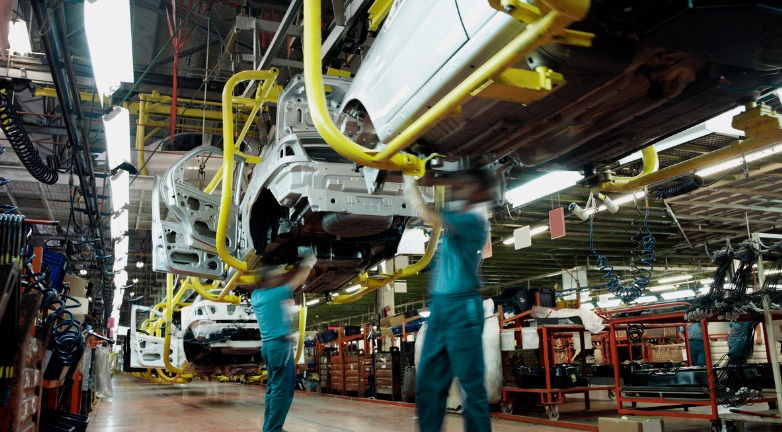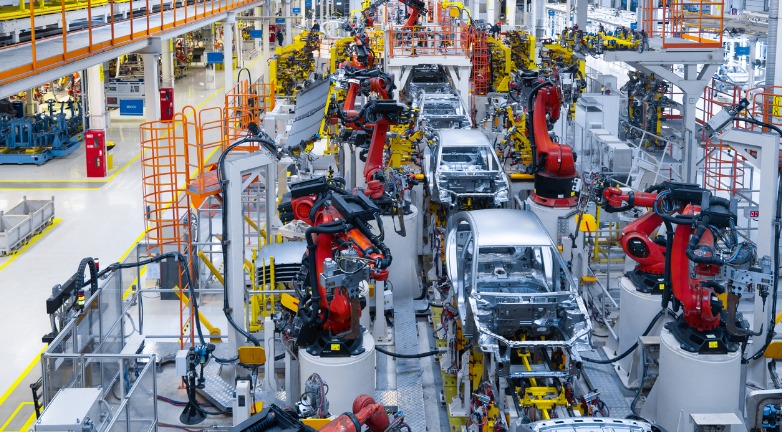Unemployment in the United States is below 4 percent, leading manufacturers to seriously consider automation because of the lack of skilled labor for positions. Monday’s New York Times highlighted the dilemma in “Robots or Job Training; Manufacturers Grapple with How to Improve Their Economic Fortunes.”
The article illustrates the challenges faced by Anthony Nighswander, president of APT Manufacturing Solutions, which builds and installs robotic equipment for assembly lines. Located in the small Ohio town of Hicksville, APT couldn’t find the workers it needed to keep up with demand. Instead of turning to automation, the team at APT started offering apprenticeships, covering the cost of college for its workers and teaching manufacturing skills to high school students.
“I never thought I would be training high school students in our facilities,” Nighswander told the New York Times. “what I knew was that I was in survival mode. I knew the orders for robots and for automation were coming in faster than I could get the jobs out.”
In the United States, experts report unemployment is low and wages are starting to rise; however, productivity growth, another key economic concept, has remained at just above 2 percent for more than a decade. The New York Times’ Ben Casselman writes that rising productivity results from better technology, more educated workers or smarter business strategies.
Some economists are predicting an investment in productivity. “For most of the recovery, wage growth has been anemic, suggesting companies faced relatively little pressure to invest in automation or to find other ways to squeeze more production out of workers,” Casselman writes. “But as the labor market tightens, companies’ incentives could be changing.”
Another example highlighted in the article is a small packaging company in Eau Claire, Wisconsin. The company puts together beer variety packs for other companies, including Miller. When David Maletto, who runs the company, couldn’t retain workers to pack the bottles and load them on pallets, he turned to the automation equipment sold by APT, the firm in Ohio. But, he did this only after he tried raising pay and signing bonuses.
“If we don’t get things automated and we don’t start moving things forward, we’re going to be the ones that get left behind,” Maletto told The New York Times.
Traditionally, economists predict increases in productivity when new technology or business innovations are introduced. Productivity wasn’t tied to the overall economy, whether it was in a recession or a recovery. Now, some experts suggest that a strong economy is prompting companies to innovate. “Maybe it isn’t a coincidence, in other words, that the last period of strong productivity growth also coincided with the last time the unemployment rate fell below 4 percent,” Casselman writes.
This change in thinking could also prompt change in economic policy. Traditionally, fixed productivity with rising wages create inflation, with higher costs getting passed on to consumers. However, if productivity also increases with wages, inflation might not be a foregone conclusion.
“Under that approach, raising rates too quickly could be a costly mistake for the Fed, snuffing out the recovery before companies can make productivity-enhancing investments,” Casselman writes. “That could be a particularly costly mistake because those investments carry long-term benefits – robots installed during a boom can keep running even when the economy slows.”
At this point, the Fed seems to side with traditional economic thinkers and is gradually raising interest rates to keep inflation in check. The test of this approach will come soon enough, as recent tax cuts have prompted spending and unemployment is predicted to fall to 3.5 percent.
Future investment
Investing in your future, whether it be in upgrading your facilities or upgrading your know-how, is an essential element for success. Consider how investing in an APICS certification could help you earn more. The “2018 Supply Chain Career Survey and Compensation Report” revealed that those who hold just one certification reported a median salary 19 percent higher than those who are not certified. Moreover, those with 2 or 3 certifications reported median salaries 39 percent higher and 50 percent higher, respectively. Learn how APICS certification can positively impact your salary and your career.


